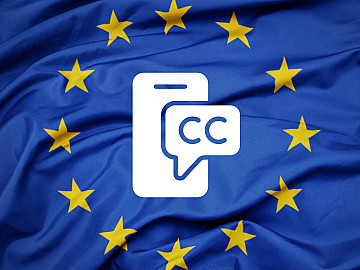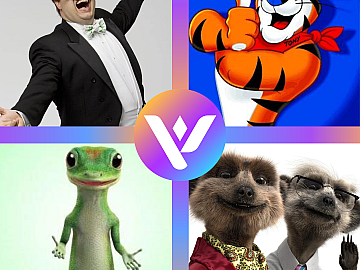Subtitles and captions are the same things, huh?
Nope. Whilst they might look similar, essential differences set them apart. Understanding what defines closed captioning vs subtitles can be important for localisation and accessibility purposes.
If you’re eager to improve engagement with your video content, this article will help you. You will understand the difference enabling you to choose the best option.
Here’s a Quick Rundown
TL;DR – If you’re short on time, this summary should clarify the basics.
Closed captions are same-language timed-text transcripts. They provide more information about the speech and audio elements in the film or media. In contrast, subtitles translate the speech content into any global language. Or, in the case of SDH (subtitles for the deaf and hard of hearing), provide a summarised description of the SFX.
What they have in common is that they both help viewers understand the dialogue and audio soundtrack. They improve engagement and open up new markets.
But they aren’t the same. Closed captioning vs subtitles: which is right for you?
Let’s take a closer look.
Closed Captioning vs Subtitles – What Do I Need?
Translations for foreign audiences
Videos that use subtitles have the power to reach global audiences. Engaging with your content is far easier when the watcher can understand the spoken language and sounds. Translation is not involved in closed captioning vs subtitles where foreign language translation is the primary objective.
Unusual or heavy accents
When the actors have a heavy accent or use slang words—especially in movies and TV shows—it can be tough for certain viewers to comprehend. Captions help alleviate this problem. Additionally, deaf audiences or those with hearing impairments will have a much easier time!
Noisy or work environments
We can’t always sit down in a controlled environment for an optimum viewing experience. Those in noisy environments, like when travelling, will have a better time with video content that uses captions. Staff at work will also appreciate the ability to watch your video without sound – no one wants to be that guy.
Search engine optimization
Subtitling and captions play a role in increasing engagement and improving SEO. The SERPs can read the timed-text files to get to know the content inside and out. Providing these is an effective way to make your content even more discoverable.
What are Closed Captions?
Closed captioning (CC) refers to timed-text transcriptions of the audio in film. Captions are always in the same language as the viewer. For example, English programmes would employ Closed Captioning in the English language.
Along with the speech/dialogue transcription, they can also include vital soundtrack descriptions. Speakers’ names, on-screen text and sound effects are all described.
Watching the Netflix series The Witcher with closed captions makes understanding all the unusual names easy!
You may have already seen this in movies, e.g. where text in square brackets explains actions as follows:
[Sarah laughs]
[thunder rumbles]
Modern video players and streaming services will group subtitles and closed captions together, but this is incorrect. For instance, Netflix lists both under the “Subtitles” heading. It does have a “[CC]” abbreviation next to closed captions to set them apart.
Still, that doesn’t mean anything to someone who doesn’t know what [CC] means. All this leads to the incorrect assumption closed captions are the same as subtitles. However, there are key differences between closed captioning vs subtitles.
Learn more about closed captioning services >
Open and Closed Captions
Captions can be open or closed. Both serve the same purpose. But, while you can turn closed captions on and off, you can’t do the same with their open counterparts.
Open captions are embedded in the video files preventing viewers from turning them off. They’re hard-coded or burned and encoded with the film. Many producers choose open captions for audiences who may not have the ability to turn the captions on/off or even know the option is there.
For example, many foreign movies at the cinema will use open captions. Many businesses use open captions for their web video localization. The other benefit of open captions is that you have more control of the styling. Great for brands who want to use fonts or specific colours.
Closed captions are the opposite. If you don’t have any trouble hearing the audio, you can choose to turn off the closed captions with a simple click. You may have already come across this with YouTube or Netflix captions.
Learn more about open caption/subtitle styles >
So, what are Subtitles then?
In contrast to same-language captions, subtitles translate the speech. Any language combination is possible. Making it possible to watch all kinds of foreign-language video content.
Without subtitles, millions of people wouldn’t have been able to appreciate movies like Life Is Beautiful, All About My Mother, Amélie, and Parasite. The same goes for viral adverts, YouTube tutorials or product explainers.
Subtitles are all about ensuring your audience can understand a spoken foreign language.
A good example of open subtitling comes translating aliens in Star Wars – like this scene where Han Solo shoots first.
Even if you know a particular foreign language, you may choose to keep subtitles on. It can be a great tool for learning! It can be very helpful when you encounter new words to improve both comprehension and spelling. For instance, avid Japanese language learners watch Anime with English subtitles.
It’s important to note a particular type of subtitles called Subtitles for the Deaf and Hard-of-Hearing (SDH). SDH includes both dialogue translations and non-speech audio elements. Apart from the translation benefits. SDH subtitles can benefit all foreign, deaf and hard-of-hearing viewers.
Learn more about subtitling services >
Let’s get creative.
There are significant differences in the application of closed captioning vs subtitles. So let’s see how we can use these functions to enhance your viewing experiences.
Closed captions are timed audio transcriptions.
If you want to enhance your accessibility to your typical audience, closed captions are your choice. People with hearing loss or hearing impairment can enjoy and appreciate your content.
These options are commonly available on YouTube videos. While there is functionality on videos to produce automated captioning, this is guaranteed to be lower quality than handcrafted closed captions.

Clicking the little gear in the bottom right of the video player, selecting “subtitles/CC”, and choosing your language is all it takes!
Search engines can’t watch or listen to your videos. So, Closed captions can also be essential for SEO purposes. Captions allow them to crawl the text and index your videos.
But at the end of the day, your users will definitely appreciate you taking the time to cater their experience – and keep coming back for more.
Subtitles are translations of the speech and audio for foreign audiences.
Generally, subtitles are implemented for viewers who can hear the sounds but don’t speak the same language. Foreign audiences will typically need subtitles to get what is being said. Without these, it will be extraordinarily difficult to follow the story and interactions between characters.
Parasite became a global phenomenon, thanks in part to the professional English subtitles (not captions).
Parasite is the first foreign film to win an Academy Award for best picture. It achieved this incredible feat in part due to its subtitles. Otherwise, no one would have been able to understand the film.
Would you be able to enjoy this trailer without them? (Understanding Korean is cheating!)
The primary benefits of subtitles include improving accessibility and increasing reach to capitalise on new markets. Subtitles are intrinsically tied to dubbing – there is even some contention on which is superior!
How captioning/subtitling services work
A professional will understand the difference between closed captioning vs subtitles for video content or film. Experts in this field will always achieve a higher quality product as they use industry-approved software that helps them synchronise the captions with the media. They go frame by frame to time the audio file transcription.
Live TV is not as simple. Captioning live events, such as sporting or newscasting, requires a unique approach. The captions are produced in real-time, so the expert will have to have flawless typing speed or a speech-to-text system. This is why there is always a delay for live captions.
The BBC uses a system to convert spoken words into captions on the fly.
Subtitling has the same captioning process but focuses on translating for foreign audiences. The process is simpler for closed captioning vs subtitles when it comes to this, as the translation adds another step to the process.
Professional, native subtitling translators are necessary for achieving a high level of accuracy, accounting for the many nuances between languages. Colloquialisms, humour and culture; are navigated in a way that an amateur cannot provide. Expert translators ensure nothing gets lost in translation. Or worse, mistranslated.
Don’t rely on cheap subtitles or captions if you want your audience to take your content seriously.
Learn more about accessibility services for video content >
Conclusion
Now you see the difference between closed captioning vs subtitles. Hopefully, that is enough to set you on your way!
No matter what you need, it will always be a difficult endeavour to create them manually. Sometimes, it may be best to contact the pros to localise and create captions. Whether you want personal captions for your YouTube video, or you require translations for your corporate content.
If you plan on using them for business, don’t choose between the two. Take advantage of both captions and subtitles. You’ll open up your content to audiences worldwide.
Learn more about Subtitling Services
or
Closed Captioning Services
Sometimes we include links to online retail stores such as Amazon. As an Amazon Associate, if you click on a link and make a
purchase, we may receive a small commission at no additional cost to you.



















